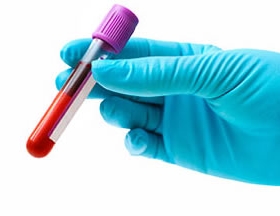Article at a Glance
Sometimes a blood test is needed to make sure your child is healthy or to find out what might be wrong. Although it isn’t very painful, for many children it can be a frightening experience.
As parents, we are in a unique position to help our children through the procedure and to help them receive the care they need. Here are some tips that will make the experience easier on the both of you.
Tips on How to Prepare Your Child for a Blood Test
Experience Matters:
Drawing blood from children is much harder than with adults. You will want somebody who is confident and who knows how to help children feel at ease. If you notice that the lab technician looks hesitant or unsure, don’t be afraid to politely ask for somebody else.
What to Tell Your Child:
Be honest with your children. Let them know that it might hurt a little, but don’t dwell on it. Being upfront with your children shows them that you will always tell them the truth, even when it isn’t pretty. That way they don’t have to worry about what you might not be telling them.
Let your children know that getting the blood test is important and help them understand why. When deciding how much information to give, take your child’s age and temperament into account. For some children hearing about all the little details might fascinate them and for others, it might be terrifying. Use your instincts and past experience with your child.
For older children, you can explain that it hurts less the more relaxed they are.
How to Tell Your Child:
Find a time that is quiet and unrushed when you can give your child your undivided attention. Make sure your child understands what you have explained and has time to ask any questions. It might help to have your child explain things back to you. Try to put yourself in your child’s shoes.
When to Tell your Child:
You don’t want to tell your child as you are walking into the lab, but how far ahead of time depends on your child. Some children will do better if you give them plenty of notice and time to ask lots of questions. But for others knowing too far ahead of time will just give them more time to become anxious. You know your child and can time things accordingly.
Help Them Feel in Control:
Depending on your children’s age, you can give them choices like whether or not they want to sit on your lap or on a chair. If they want to watch or look away. If it would help to look at a book, sing a song, hold your hand, or bring a favorite toy. Do they want to do it alone or do they want you to come with them? Children feel calmer when they know they have some control over the situation.
Provide a Distraction:
Children do better if you can distract them. This might mean bringing a favorite book, a beloved toy, or letting them watch a video on your smartphone. Some parents tell their children that afterward they can go get a small toy or treat. Talking about what kind of toy you might get can be a helpful distraction during the procedure.
But don’t make the reward contingent on whether or not your child cries or is cooperative. Avoid using threats or yelling. This will make your child more fearful or anxious. Instead, recognize your child’s emotions and help your child identify and work through any fears.
Staying Calm:
Blood tests are hard on parents too, but it is important for your child to see that you are calm. Children will pick up on your reactions. Staying calm will also help you focus on your child’s needs. If you think you might need help, bring some moral support along.
Understand What is Needed From You:
While the blood is being drawn, your child will have to hold completely still. This can be difficult for babies and toddlers. Some labs will have somebody there to help restrain smaller children, but some may not. If the job falls on you, make sure you understand exactly what is needed from you. And if you think you are going to need extra help, don’t be afraid to ask.
Fainting:
Some children are afraid of needles and might get lightheaded during the procedure. If you are worried about fainting or if your child has fainted in the past, ask that the procedure be performed lying down.
Topical Anesthetic:
Talk to your doctor about using a topical anesthetic. For younger children or for children that are particularly sensitive, it may help not to feel the needle going in.
